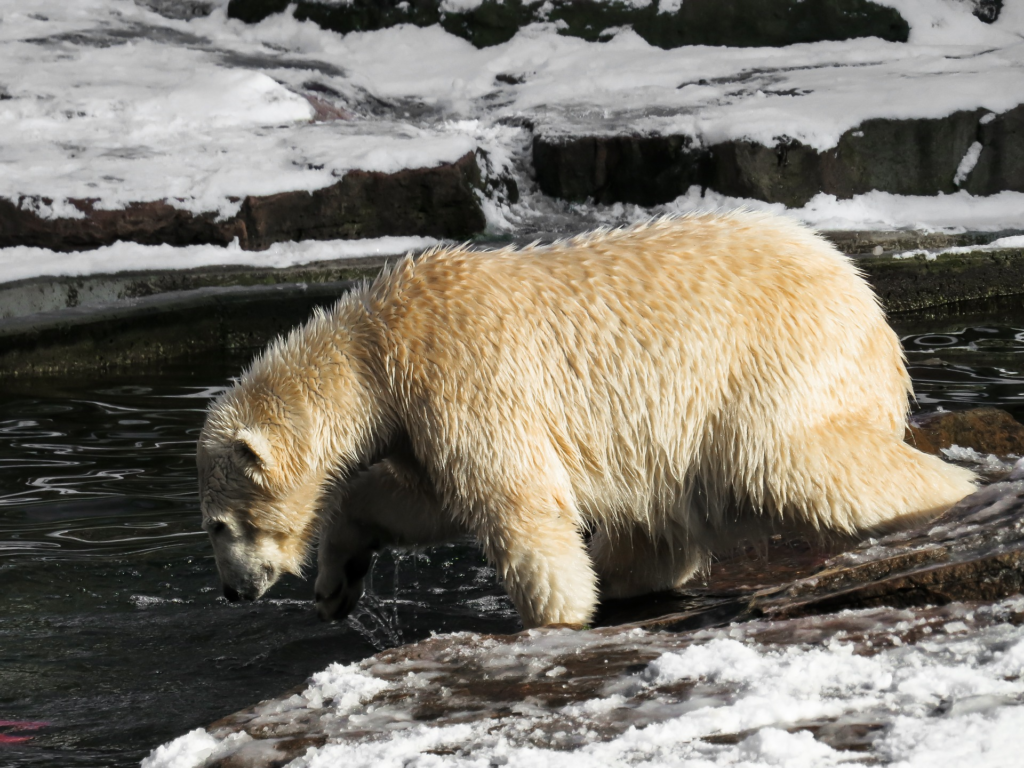In 1907 Jujiro Wada traveled from Dawson to Herschel Island, and at Porcupine River his guide left him,
insisting Wada easily travel alone. During the last leg of his solitary travel, Wada bore witness of an
Eskimo struggling for his life with a polar bear, after his rifle failed.
In the earlier days of Yukon and Alaska, when pioneers like Wada explored the area,
among other animals, bears also were still hunted for their fur. We know from reports
that a succesful bear hunt still formed a risky thing to try.
Out in the field, skin and flesh are largely seperated,
but to save time, its skull often is still attached. The bear skin can weigh 200 kg.
Just walking with such a load is very tiresome, but then the landscape doesn`t make it easier.
Bears are most easy to track during fall, as they crowd around salmon grounds, or in spring when
snow makes place for fresh green sprouts. Most animals gather in the same areas where beavers build their structures.
When carrying your bear skin past these salmon grounds, you have to cross beaver ponds, and a lot of wet landscapes.
Beaver ponds sometimes have very deep spots, and when you loose your balance, the bear skin on your back
then pulls you down. In spring melting snow creates a lot of fresh creeks. To keep your cloths dry,
it`s best to jump over them, but carrying a bear skin makes jumping completely out of the question.
Men hunting bears are known to put on thigh-high boots, but even that doesn`t prevent them for getting soaking wet.
The bear meat is left where it was, and coyotes and birds will take care it disappears within 1 day.
